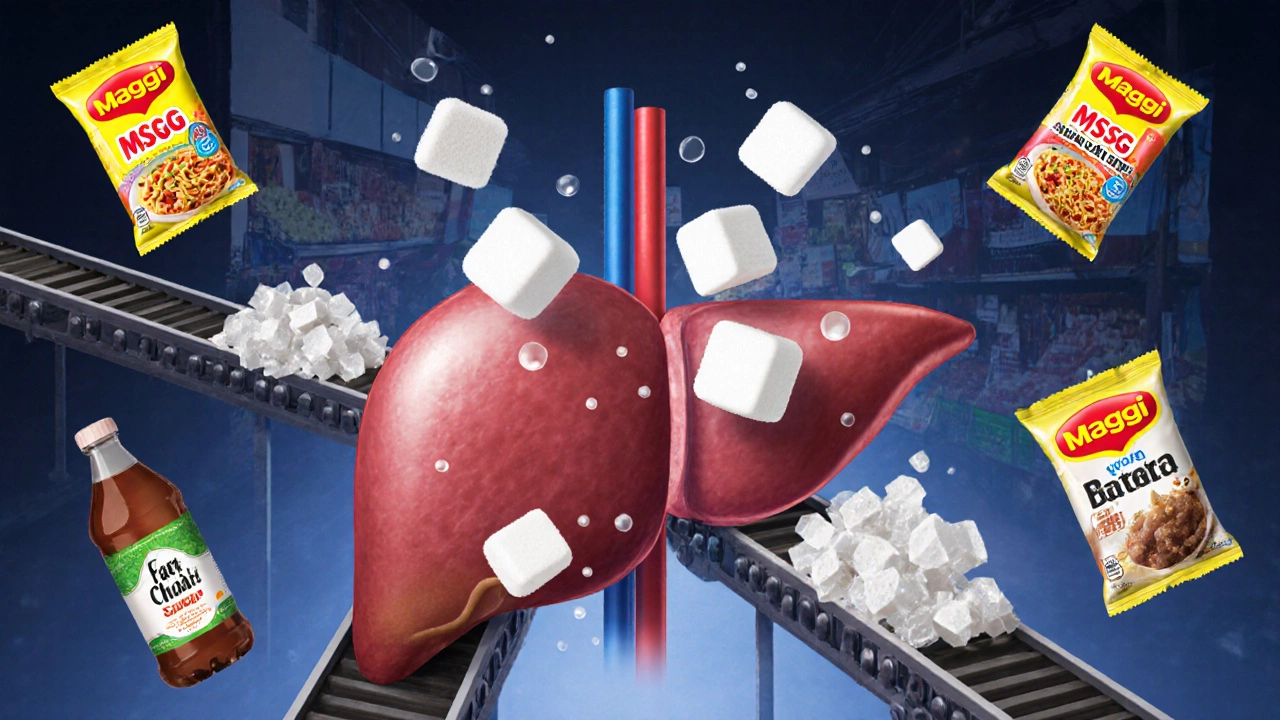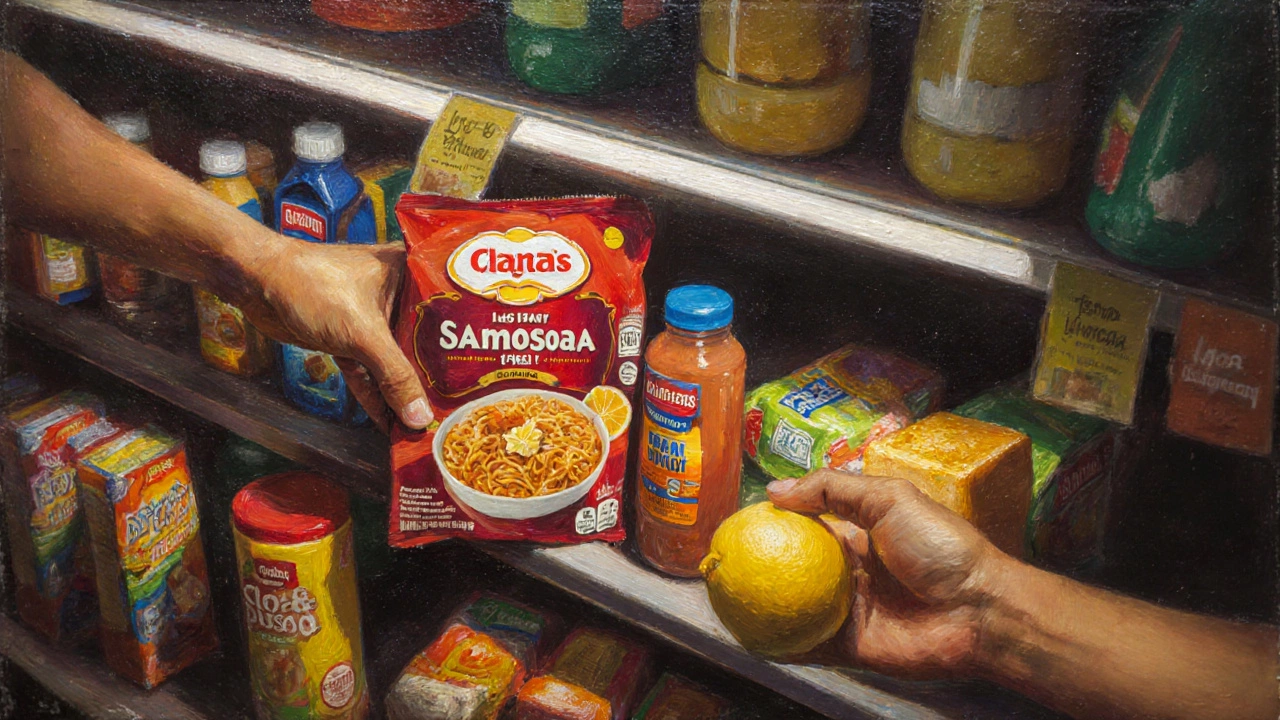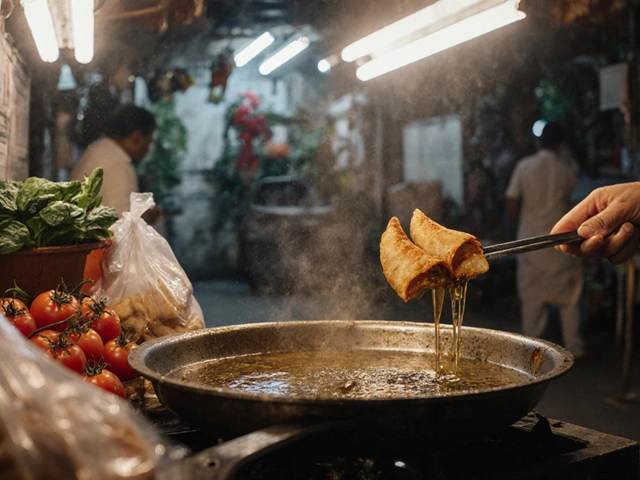Ultra-Processed Food Health Checker
Based on the article "What Is the Unhealthiest Food in the World?", check if your favorite packaged food contains harmful ingredients and processing methods.
Risk Assessment
There’s no official list of the unhealthiest food in the world. But if you look at what’s actually making people sick-diabetes, heart disease, liver failure-it’s not the vegetables you forget to water or the tomatoes that got too much sun. It’s the stuff that doesn’t even grow in soil. It’s engineered. It’s packaged. And it’s designed to keep you coming back for more.
It’s Not About Freshness-It’s About Formula
You can grow perfect spinach in your balcony garden in Bangalore or sweet potatoes in a pot on your terrace in Delhi. But none of that matters if you’re eating a bag of fried snacks that came in a plastic wrapper with a list of ingredients you can’t pronounce. The unhealthiest food isn’t something that rots or gets eaten by bugs. It’s something that doesn’t rot at all.
Take a typical packaged samosa from a roadside vendor in Mumbai. The dough? Often made with hydrogenated oil-trans fat-that stays solid at room temperature and clogs arteries over time. The filling? Loaded with refined flour and salt. The frying oil? Reused ten times. That’s not food. That’s a chemical reaction waiting to happen in your body.
The Real Culprit: Added Sugar
Sugar isn’t just in candy. It’s in bread. In ketchup. In yogurt labeled ‘low-fat.’ In masala chai sold at train stations. The average Indian adult consumes over 20 teaspoons of added sugar every day. The World Health Organization says five is the max.
When you drink a bottle of cola, your liver gets flooded with fructose. It doesn’t know what to do with it, so it turns it into fat. That fat builds up in your liver. That’s non-alcoholic fatty liver disease-and it’s now the #1 cause of liver problems in young adults. And it starts with something as simple as a daily sweet drink.
Trans Fats: The Silent Killer
Trans fats are artificial. They don’t exist in nature. They’re made by forcing hydrogen into vegetable oil to make it solid. That’s how you get vanaspati ghee, the kind used in millions of Indian homes for frying parathas and pakoras.
Studies show trans fats raise bad cholesterol (LDL) and lower good cholesterol (HDL). One study in The Lancet found that every 2% increase in calories from trans fats raises heart disease risk by 23%. And yet, many small manufacturers still use it because it’s cheap and extends shelf life.
In 2022, India banned partially hydrogenated oils-the main source of artificial trans fats. But enforcement is patchy. You can still find them in street food, bakery items, and even some branded snacks sold in small towns.

Ultra-Processed Foods: The New Normal
Ultra-processed foods aren’t just unhealthy. They’re designed to be addictive. They’re engineered to hit the ‘bliss point’-the exact mix of sugar, salt, and fat that makes your brain say, ‘More.’
Think of Maggi noodles. Instant. Flavorful. Cheap. But one packet has 1,200 mg of sodium-more than half the daily limit. The seasoning powder? Full of monosodium glutamate (MSG), artificial colors, and preservatives. It’s not food. It’s a flavor bomb wrapped in a noodle.
A 2023 study in the British Medical Journal followed over 100,000 people in India and found that those who ate more ultra-processed foods had a 40% higher risk of developing type 2 diabetes. The more processed, the worse the outcome.
Why ‘Unhealthiest’ Doesn’t Mean ‘Worst Ingredient’
Some people think the unhealthiest food is deep-fried chicken or ice cream. But those can be made at home with real ingredients. The real problem isn’t the ingredient-it’s the system.
When you eat a homemade biryani with basmati rice, ghee, and fresh spices, you’re eating food. When you eat a frozen biryani from the supermarket with stabilizers, flavor enhancers, and palm oil, you’re eating a chemical approximation. One nourishes. The other just fills you up while slowly breaking you down.
The same goes for packaged fruit juices. They’re made from concentrate. They’re pasteurized. They’re sweetened. They have no fiber. They spike blood sugar faster than soda. And they’re marketed as ‘healthy.’

What You Can Do
You don’t need to quit everything. But you need to know what you’re putting in your body.
- Check the ingredient list. If it’s longer than five items and includes words like ‘hydrogenated,’ ‘mono-,’ ‘di-,’ or ‘-ate,’ think twice.
- Choose whole foods: rice over instant noodles, fresh fruit over juice, homemade chutney over bottled sauces.
- Learn to cook. Even one meal a day made from scratch reduces your exposure to hidden sugars and fats.
- Support local vendors who use fresh ingredients. Ask them what oil they use. If they hesitate, find someone else.
There’s no magic food that’s the single unhealthiest in the world. But there’s a whole category of food that’s designed to be eaten without thinking-and that’s the real danger.
It’s Not About Perfection-It’s About Awareness
Maybe you grow your own tomatoes. Maybe you compost your kitchen waste. Maybe your terrace garden is the pride of your apartment complex. That’s amazing. But if you’re eating packaged snacks while you tend to your plants, you’re fighting one battle while losing the war.
Health isn’t just about what you grow. It’s about what you choose to eat. And the most unhealthiest food isn’t something you can buy at a seed store. It’s something you find on the bottom shelf of the convenience store, glowing under fluorescent lights, calling your name.
Know the difference. Choose better. Your body will thank you.
Is sugar the worst ingredient in unhealthy food?
Sugar is one of the biggest problems, but it’s rarely alone. The real danger comes from sugar combined with trans fats, refined carbs, and artificial additives. Together, they trigger inflammation, insulin resistance, and fat storage in the liver. One study found that people who drank sugary drinks daily had a 26% higher risk of heart disease-even if they weren’t overweight.
Are traditional Indian foods like samosas and pakoras unhealthy?
Traditional recipes aren’t the problem-it’s how they’re made today. Homemade samosas with whole wheat dough and fresh oil are fine in moderation. But the ones sold on streets and in shops? Often fried in reused oil with hydrogenated fat. The dough is made with refined flour. The filling is loaded with salt and preservatives. That’s what turns a cultural dish into a health risk.
Does banning trans fats in India solve the problem?
The 2022 ban on partially hydrogenated oils was a major step. But enforcement is weak in small towns and informal food markets. Many vendors still use old stock or unregulated oil. The ban helps, but real change needs consumer awareness. Ask vendors what oil they use. If they don’t know, don’t buy.
Is packaged food always unhealthy?
Not always. Some packaged foods like canned lentils, plain oats, or frozen vegetables without additives are fine. The problem is ultra-processed foods-those with long ingredient lists, artificial flavors, and preservatives. Check the label. If it looks like a science experiment, it probably is.
Can I still eat junk food if I garden healthy vegetables?
Gardening is great, but it doesn’t cancel out poor diet choices. Eating homegrown spinach won’t undo the damage from daily fried snacks. Health is about overall patterns, not single acts. If you’re growing your own food, use that as a foundation-not an excuse.
What to Eat Instead
Swap out the packaged snacks for roasted chana. Replace sugary drinks with nimbu pani made with real lemon and jaggery. Choose brown rice over white. Eat whole fruits instead of juice. Cook with mustard oil or coconut oil instead of vanaspati.
You don’t need to be perfect. Just be more aware. The unhealthiest food isn’t something you can’t find in a market. It’s something you’ve been conditioned to think is normal. Break that habit. Your body didn’t evolve to handle 20 teaspoons of sugar a day. It’s not asking for much-just real food, eaten slowly, with intention.


